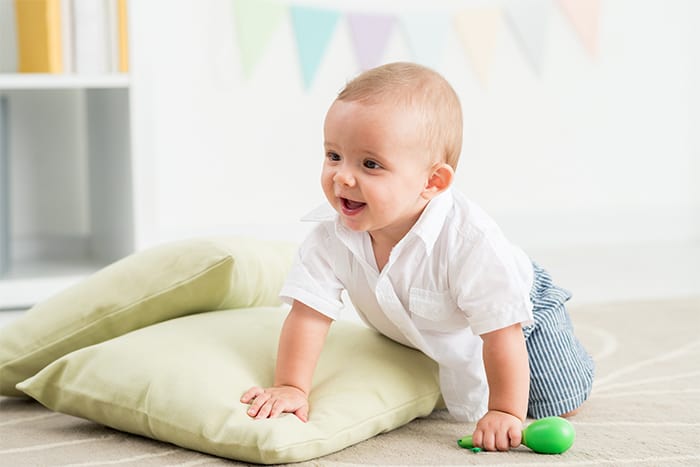There is much debate about do babies start crawling or sitting up first. Some parents say that most babies will start crawling before they sit up, but others believe that many babies should not start crawling until they are around one year old. The truth may be somewhere in between, as is typically determined by the child’s development.

Most experts agree that infants who are able to move their arms and legs along with their torso and head are more likely to crawl sooner than those who don’t. This means that if your baby can curl up on her back, she is likely ready to start crawling. If your baby doesn’t seem interested in moving around much at first, don’t worry; she may just need some time to adjust to her new environment.
When Does Crawling happen?
Crawling is a developmental milestone that typically occurs between 12 and 16 months of age. It is the earliest stage in which infants can move independently and explore their surroundings. Crawling allows babies to move quickly and easily across the surface they are on, increasing their interactions with their environment.
There are several stages that a baby goes through while crawling. The first stage is known as the rooting reflex. During this phase, babies will instinctively curl their toes and push up with their heels when they sense something approaching them from below. They may also make grunting noises or show signs of being scared or uncomfortable.
The second stage is known as the developmental crawling stage. During this phase, babies will move their entire body together, including their hands and feet. They will start to crawl on hands and knees, then move onto all fours.
The third stage is known as the cruising stage. During this phase, infants will reach out with their arms and legs while moving forward as they are beginning to walk.
Crawling is a great way for infants to explore their surroundings and learn how to move around. However, crawling can also be a risky activity for babies, as they can easily fall and bruise themselves.
On the other hand, crawling provides babies with important development skills, including mobility and coordination.
When Does Sitting Up happen?
When a baby starts to sit up, they are doing so with the support of their hands and arms. This is called sitting up unsupported. Unsupported sitting typically occurs at about 14-18 months old. However, babies can sit unsupported at any time during their development if they are able to maintain a stable base. Stabilizing the base means keeping the baby’s head and trunk upright and preventing them from swaying back and forth.
When a baby shows clear signs that they are ready to sit up, parents may see a sign that baby is ready to start sitting up more independently. This could mean that baby can hold their head up, is able to keep a balance while sitting, and can support their weight without help from parents. Parents may see this sign when their baby starts to: show interest in looking around, hold their head up for longer periods of time, and try to sit up by themselves.
There are many pros and cons to baby sitting up. Some people say that it is good for babies because it builds their motor skills and helps them learn how to sit up on their own. Others say that it can be dangerous for babies if they fall off of a chair or the couch, and that they should never be left alone in a room with a baby who is sitting up.

Differences between Crawling and Sitting Up
Crawling and sitting up are two different developmental milestones that your baby will achieve at different times. Here’s a look at the key differences between crawling and sitting up:
- Crawling is a hands-and-knees motion that starts with your baby lifting one foot off the ground and then dragging the other behind them as they move forward. Sitting up is a standing up motion where your baby lifts their whole body off of the ground.
- Crawling is an important first step in moving around independently and learning how to explore their surroundings. Sitting up helps your baby learn how to hold themselves upright, make eye contact, and speak clearly.
- It can take babies months or even years to master crawling, while it may take only a few weeks for them to sit up completely on their own.
Can a Baby Crawl without Sitting?
Your baby can crawl without learning to sit. This is because crawling is a developmental stage that precedes sitting. Crawling allows babies to explore their environment and develop motor skills. Crawling is also an important way for babies to learn how to move around independently.
Crawling can help babies develop muscle strength and coordination needed to move from a lying position to a sitting position. This activity helps babies learn how to balance themselves, improve their motor skills, and develop the core muscles needed for sitting up.
Conclusion
In conclusion, babies can learn to crawl and sit up at the same time. Parents should provide ample opportunities for crawling and sitting, as these skills will become increasingly important in later development. Parents should also be mindful of their babies’ energy levels and provide plenty of REST when needed.









